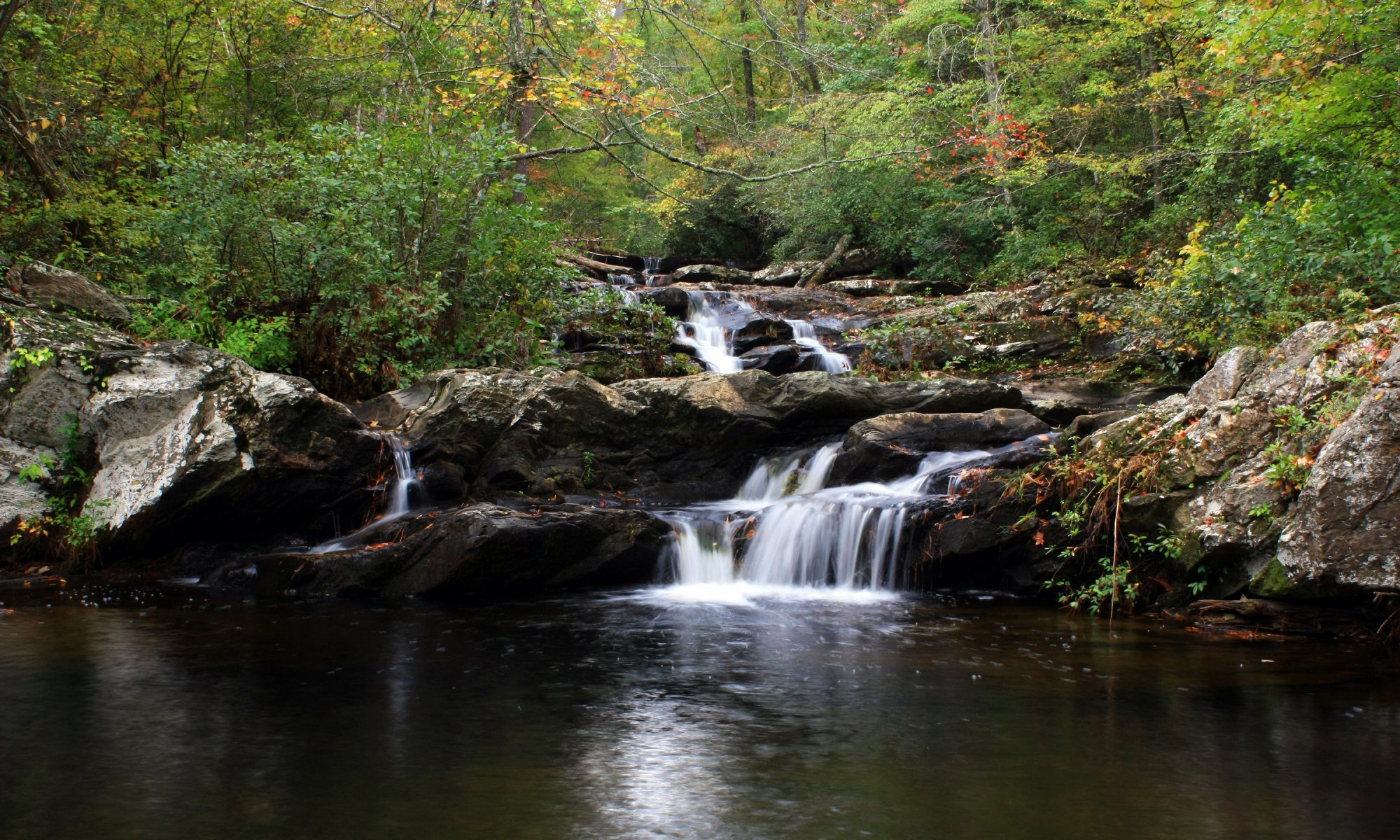
Ask five different woodsmen how they came to learn the ways of the wild, and you’ll likely get five different answers. Sometimes skills are passed down by a parent or grandparent. Or perhaps the appetite for this lore might be inspired by a book or documentary. Even a Hollywood production can strike that first spark, just as Jeremiah Johnson did for so many of my generation. Often, there is no reasonable explanation to point at, only an innate magnetic pull that a little boy or girl feels from the forest the first time he or she moves into the shadows under the trees.
No matter how it takes hold of us, the bond grows quickly . . . and, most often, permanently. But there is a profound difference in how we approach the forest now as compared to the way in which the earliest humans did. We of modern times meet the challenge with a decided disadvantage. First of all, we are not born into it. Not literally. It is usually years before infants are introduced to the wild places (if at all); and, because of that, the green places of the world are first seen as foreign ground containing the unknown. Even with enthusiastic parents who haul their young into what’s left of the green paradise, there is a lot of separation instilled into the process: safeguarding, warnings, tent walls, insect repellent, and packages of food from home.
Anthropologists tell us that paleo people were born with instincts to which we today are not privy. We still have plenty of good natural gut feelings about plenty of things, but perhaps the most important knowledge we lack is about plants. As difficult as it might be to believe, early humans were born with a treasury of information about everything that grew in their area. What to eat and what is poisonous. Which plant will settle an upset stomach and which will ease pain. How to resolve a headache and how to stop bleeding. All of this—and so much more—was hardwired into the genetic code.
So what happened to these instincts?
As our culture became more refined, we simply lost most of them. It’s the same story all over the world. Wherever villages expand to cities . . . wherever languages develop to the point of experiencing things vicariously instead of practically . . . wherever walls and pavement and thermostats separate people from the reality of the outdoors . . . those paleo instincts fade. Just as it is with a muscle, it’s the “use it or lose it” syndrome. We might be crackerjack smart with a computer or fiercely strong from the weight room, but these attributes are acquired. We’ve lost our genetic intelligence about nature.
Hard to believe? Do you doubt that some long-ago person could really know by simply standing before a shrub of mountain laurel that he must not eat its greenery? Or that he could ponder a spindly spiderwort growing by a stream and know to start eating? If that proposition makes you skeptical, then how would you explain the success of wild animals? How do they know what to eat? And what not to? True, there is some parent-to-offspring teaching that goes on in the wild, but largely—just like our paleo forebears—wild creatures are born with a vast knowledge about their surroundings.
Consider a kingsnake. Like the majority of snakes, it lays eggs and deposits them in a safe place. When those babies hatch, they’re on their own. They probably never even meet their parents. Obviously, there can be no lessons on forest protocol, how to hunt, what to hunt, or how to survive. No one is there to tell them, “Hey, you can eat other snakes! But don’t worry about copperheads. Gobble them up, too. You are immune to their venom.”
So, considering this loss of instincts within the human race, what do we do about it? Especially concerning our ignorance of plants? For this is, in my opinion, the most grievous part of what we civilized beings lack. The answer: We study. We acquire it academically. We have no other choice. That may seem daunting to most in this age of all-things-happening-fast, but this botanical study can be a grand adventure. It is fun, confidence-inspiring, and even taps into the spiritual. But mostly it is important. My first rule about learning primitive skills is this: The knowledge of plants in your area is the foundation of all that follows in woods lore. Learn the plants first. That basic botanical study will play a key role in every skill you undertake.
It is true that many practitioners of primitive skills approach learning their crafts from other angles, and they can achieve excellent levels of competency in their preferred areas. But there is a certain “intimacy of place and materials” in learning plants that I feel cannot be won any other way. And for the woods person, the practicality is undeniable.
Take a bow and arrow, for example. If you have the luxury of long-term planning and you wish to make a bow, the ideal harvesting time is in winter, when the sap is down. This calls for knowing how to recognize a certain species of tree when leaves are not present. You have bark pattern, branch structure, leaf scars, and habitat to help you make the I.D. Most folks can’t do this.
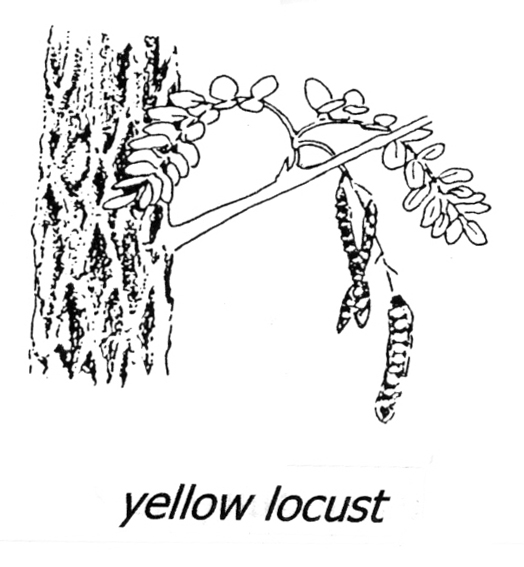
To create fire by friction, you want to avoid wasting time and energy on those species of trees that either don’t pan out or might be too difficult for success. In this case you’ll be considering only dead, dry wood as a candidate. Now, in addition to no leaves present, bark will likely be missing, too. Your identification of the type of tree might be reduced to determining whether the tree has opposite or alternate branches, by noting the habitat, and by studying the grain and texture of a carved sliver of wood. Then there’s the weight of the wood—its density vs. its porosity. These are details that come to light with plant study.
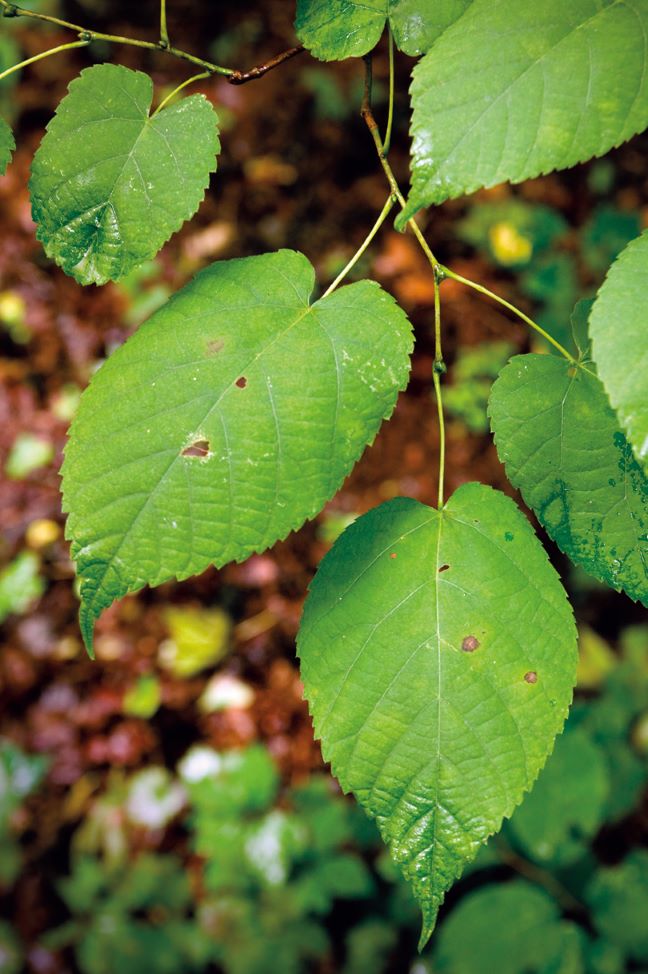
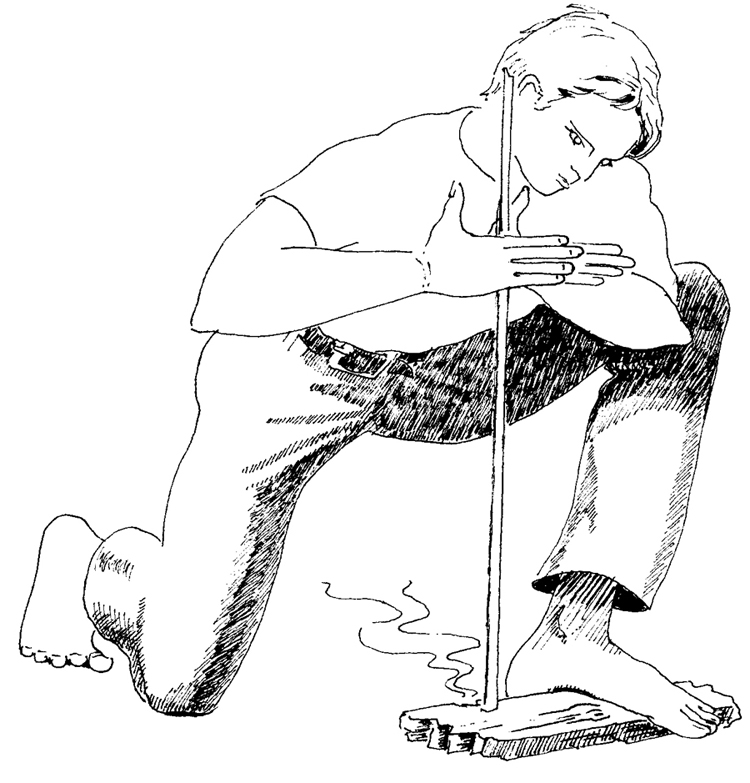
To hunt well, one must be ever-mindful of the olfactory senses of wild animals. Theirs is a level of sensitivity we cannot relate to, and so our body-scent might be overlooked. The Cherokees eliminated their scent by scrubbing their bodies with the dried and ground-to-powder inner bark of the hemlock tree. If time does not allow for drying, a bough of needles can suffice.
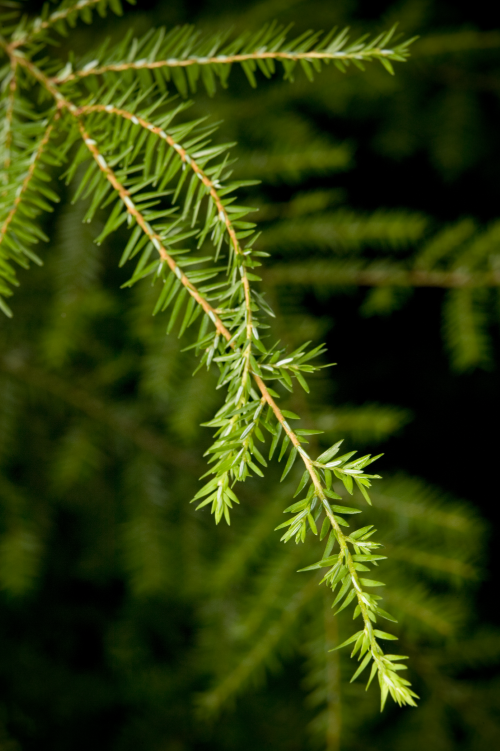
One day in mid-spring I followed the trail of two high school students who had run away from their outdoor class in North Carolina’s Pisgah Forest. At first the signs were easy to follow, but when the runaways grew stealthy, I hit a dead end. It turned out that the two boys had walked a narrow barkless log like a balance beam, taken a mighty leap, and dropped onto a floodplain to continue their escape across a creek. After fifteen minutes of trying to cut their trail through a series of semi-circles, I smelled their trail from forty feet away simply because I was familiar with the scent of a particular fern when crushed. I knew where it should grow, so that’s where I went. I picked up the trail and found my quarry within an hour.
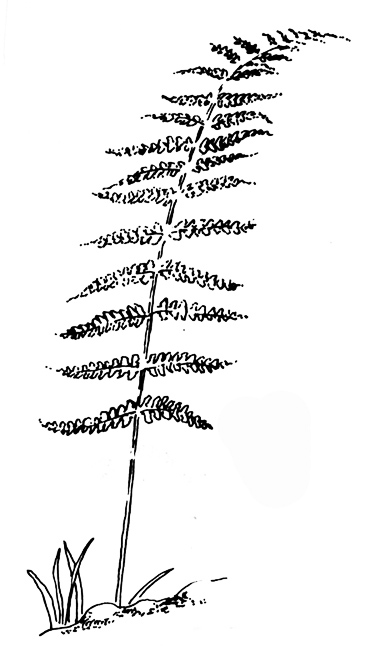
If the botanical approach to primitive skills appeals to you, I have some suggestions: Sign up for plant walks with nature centers and parks. Hook up with a plant aficionado in your neighborhood and barter your skills for his or hers. Ask lots of questions. You’ll find that these teachers thrive off your interest. Once you have reached a beginner’s level that allows you to pursue identifying plants on your own, choose a good layperson’s plant book that will not overwhelm you with scientific vocabulary.
But make this promise to yourself: Never guess about any plant you plan to use as food or medicine. Be positive of its identification and its use. We can experiment with fire-making woods and arrow shafts, but never with plants that we ingest. Keep it safe.
Why do we choose to go into the woods? From the many conversations I have had with students of survival skills, I believe that one crucial answer to that question is answered in a single word: atavism. We feel drawn into the wild places by a silent siren who sings to us through our chromosomes. It is the echo of our ancestors pulling us back to “the real world.” We crave some kind of reconnection to a lost intimacy with the wild things. No better beginning waits for us than the plants, because—unlike the deer and fox and bear—the trees and herbs and vines do literally stand and wait. They are waiting at this moment in a nearby forest.

